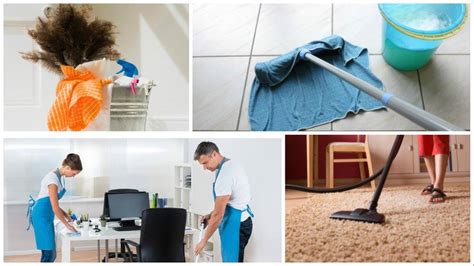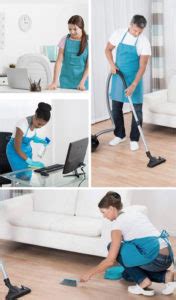Maintaining the pristine condition of your furniture can be a challenging yet rewarding task, especially when it comes to upholstery. Ensuring that your sofas, chairs, and cushions remain spotless and undamaged requires a thoughtful approach to cleaning. This ultimate guide will walk you through the essential steps for safe and effective upholstery cleaning, from assessing your upholstery material and choosing the right cleaning products to applying the proper techniques for different stains. You’ll also learn the importance of regular vacuuming, prompt spill management, and deep cleaning with steam. Finally, discover how to protect and extend the life of your upholstery with fabric protectors. Keep your furniture looking brand new with these expert tips!
Delve into this topic with shzow.com to gain a thorough understanding.
1. Assess Upholstery Material
Before you begin cleaning your upholstery, it’s essential to determine the fabric type. Upholstery fabrics vary widely, including cotton, leather, polyester, velvet, and microfiber, each with specific care requirements and cleaning methods. Knowing the fabric type allows you to choose appropriate cleaning products and techniques that won’t damage the material.
Begin by examining the manufacturer’s label or tag, as it frequently provides essential details about the fabric composition and suggested cleaning techniques. These tags commonly use codes such as “W” for water-based cleaning, “S” for solvent-based cleaning, “WS” for both water and solvent-based cleaning, and “X” to signify that professional cleaning is the only recommended option.
To ensure safe and effective cleaning, consult a professional upholstery cleaner if the manufacturer’s label is missing or unclear. Alternatively, perform a patch test in an inconspicuous area of the furniture to identify potential reactions. Understanding the fabric type and its characteristics is crucial to prevent discoloration, shrinkage, or texture changes that can result from improper cleaning. This meticulous evaluation establishes a sound cleaning strategy that preserves the upholstery’s appearance and longevity.

2. Choose Appropriate Cleaning Products
Selecting the right cleaning products for your upholstery is essential to maintaining its appearance and longevity without causing damage. The variety of upholstery fabrics means that what works for one type might not be suitable for another, making it crucial to match your cleaning products to your specific material.
Begin by reviewing the cleaning codes on the upholstery label, which will guide you in choosing between water-based, solvent-based, or professional cleaning solutions. For water-friendly fabrics, gentle water-based cleaners are typically effective and safe. Solvent-based cleaners are better suited for fabrics that cannot tolerate water, but always ensure they are appropriate for the fabric type. Always avoid harsh chemicals or bleach, as they can discolor or weaken the fabric fibers.
For an eco-friendly alternative, consider using natural cleaning solutions such as vinegar and baking soda for stain removal and deodorizing. However, always do a patch test first to ensure no adverse reaction occurs with the upholstery material. Additionally, opt for products specifically designed for upholstery, as they are formulated to be gentle yet effective.
Remember, using the correct cleaning products not only helps in removing stains and spills efficiently but also contributes to the fabric’s overall durability and aesthetic appeal, p

3. Test Cleaning Solutions on a Small Area
Always test any cleaning solution on a small, hidden area of your furniture before applying it to the entire piece. This is essential to prevent discoloration, damage, or alterations to the fabric’s texture.
To perform a patch test, choose an inconspicuous area of the furniture, like the back or underside of a cushion. Apply a small quantity of the cleaning solution to this area, adhering to the product’s application instructions. Using a clean cloth or sponge, gently work the solution into the fabric, avoiding oversaturation. Let the solution sit for the recommended time as stated on the product label.
Following the waiting period, use a clean, damp cloth to blot away any remaining residue. Allow the spot to dry completely. Once dry, carefully inspect the area for any discoloration, fabric damage, or alterations in texture. If the test area exhibits no negative effects, you can confidently proceed with cleaning the rest of the upholstery.
This precautionary measure safeguards your furniture by ensuring the cleaning solution is both safe and effective for your specific upholstery fabric. It prevents potential damage and preserves the integrity of your furniture.

4. Use Proper Cleaning Techniques for Different Stains
To keep your upholstery pristine and unharmed, different stains call for different cleaning methods. The first step in tackling any stain is to identify its nature – whether it’s water-based, oil-based, or dye-based. This categorization will guide you towards the most effective stain removal technique.
To tackle water-based stains like coffee or wine, begin by blotting the affected area with a clean, dry cloth to absorb excess liquid. Subsequently, apply a water-based upholstery cleaner or a mixture of mild dish soap and water. Using a clean cloth soaked in the solution, gently dab the stain, moving from the outer edges towards the center to avoid spreading.
Oil-based stains, such as grease or makeup, demand a unique cleaning method. First, blot away any excess oil using a clean, dry cloth. Next, apply a small amount of solvent-based cleaner to a separate cloth and gently dab the stain. Refrain from scrubbing, as this may force the oil deeper into the fabric.
When tackling dye-based stains, like ink or nail polish, utilize specialized stain removers formulated for the particular type of dye. As a precautionary measure, always test your cleaning solution on an inconspicuous area of the upholstery beforehand to confirm its safety and prevent any potential damage.
5. Vacuum Regularly to Prevent Dirt Build-up
Regular vacuuming is a fundamental part of upholstery maintenance, essential for preventing the build-up of dirt, dust, and debris that can dull the appearance of your furniture and shorten its lifespan. Dust particles and other airborne contaminants can settle into the fabric, potentially causing wear and tear over time, particularly in high-traffic areas like family rooms and living spaces.
To effectively vacuum your upholstery, use a vacuum cleaner with a brush attachment. This attachment is designed to be gentle on fabric while effectively removing surface dust and embedded dirt. Start by removing any loose cushions and vacuuming them separately. Pay special attention to seams, crevices, and corners, where dirt and debris often accumulate.
It’s advisable to vacuum your upholstery at least once a week, or more frequently in homes with pets or young children. This routine not only keeps your furniture looking fresh but also reduces allergens and improves indoor air quality. Additionally, regular vacuuming makes the task of deep cleaning easier and more effective, as there’s less build-up to contend with.
Incorporating a consistent vacuuming routine into your home maintenance plan is a simple yet impactful way to extend the life and beauty of your upholstery.
6. Handle Spills and Stains Promptly
Prompt action is essential for maintaining the cleanliness and integrity of your upholstery. Spills and stains should be addressed immediately to prevent them from setting and becoming more difficult to remove. The sooner you act, the better the chances of preventing permanent damage.
Start by carefully blotting the spill with a clean, dry cloth or paper towel to soak up as much liquid as you can. Do not rub or scrub the area, as this could force the liquid deeper into the fabric and make the stain worse. If the spill is solid or semi-solid, use a spoon or a dull knife to delicately scrape away the excess before blotting the affected area.
After addressing the initial spill, identify the stain type and select the suitable cleaning method and product, considering the fabric type and cleaning code. Dampen a clean cloth with the cleaning solution and gently blot the stain, moving from the edges inward to prevent spreading.
After treating the stain, use a damp cloth to blot away any remaining cleaning solution. Then, allow the area to air dry completely. Promptly addressing spills and stains can significantly reduce the risk of permanent damage and keep your upholstery looking its best.
7. Use Steam Cleaning for Deep Cleaning
Steam cleaning is an effective method for deep cleaning upholstery, offering a thorough and sanitizing clean that can rejuvenate even heavily soiled furniture. This technique utilizes high-temperature steam to lift dirt, stains, and allergens from the fabric without the need for harsh chemicals.
To begin, ensure that your upholstery is compatible with steam cleaning by checking the manufacturer’s label or doing a patch test in an inconspicuous area. Prepare the steam cleaner according to the manufacturer’s instructions, usually filling the water tank and allowing the machine to heat up.
Start by vacuuming the upholstery to remove any loose dirt and debris, which helps the steam cleaner work more efficiently. Once the upholstery is vacuumed, use the steam cleaner to gently apply steam to the fabric, moving in a systematic pattern. Avoid over-saturating the fabric; instead, use short bursts of steam and a brushing attachment if available to agitate the fabric and help lift dirt.
After steam
8. Protect and Maintain Upholstery with Fabric Protectors
Protecting and maintaining your upholstery with fabric protectors is an effective way to extend its life and keep it looking pristine. Fabric protectors create a barrier on the surface of your upholstery, helping to repel spills, stains, and dirt while making routine cleaning easier.
To apply a fabric protector, start by ensuring your upholstery is clean and dry. Vacuum thoroughly to remove any dust and debris. Next, select a fabric protector that is appropriate for your specific upholstery type, such as a spray designed for synthetic or natural fibers. Always follow the manufacturer’s instructions for application.
Spray the fabric protector evenly across the upholstery, holding the canister or bottle at the recommended distance to avoid oversaturation. Pay special attention to high-use areas and seams. Allow the fabric protector to dry completely, which usually takes a few hours. It’s advisable to apply the protector in a well-ventilated area to avoid inhaling any fumes.
Regular application of fabric protectors can help prevent stains from setting and make cleaning easier. Reapply the protector as needed, especially after deep cleaning or after a significant amount of us
Maintaining your upholstery in pristine condition requires a thoughtful and consistent approach. By assessing your upholstery material, choosing appropriate cleaning products, and testing solutions, you ensure safe and effective care. Regular vacuuming, prompt handling of spills, and using steam cleaning for deep cleans are essential practices. Additionally, protecting your furniture with fabric protectors can extend its lifespan and keep it looking fresh. With these strategies, you can preserve the beauty and functionality of your upholstery, making it a lasting and attractive part of your home. Embrace these tips for spotless, well-maintained furniture that enhances your living space.
shzow.com
